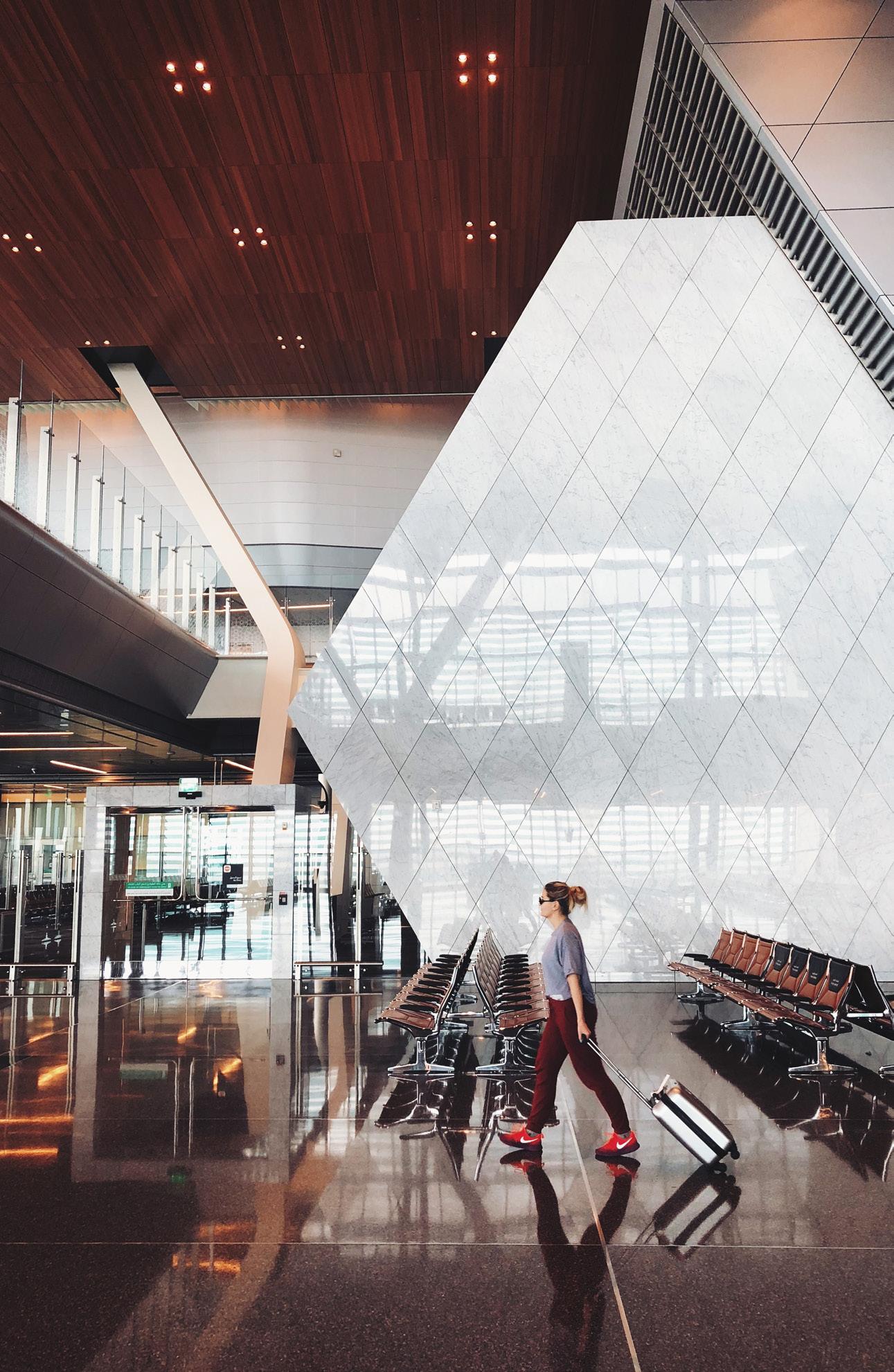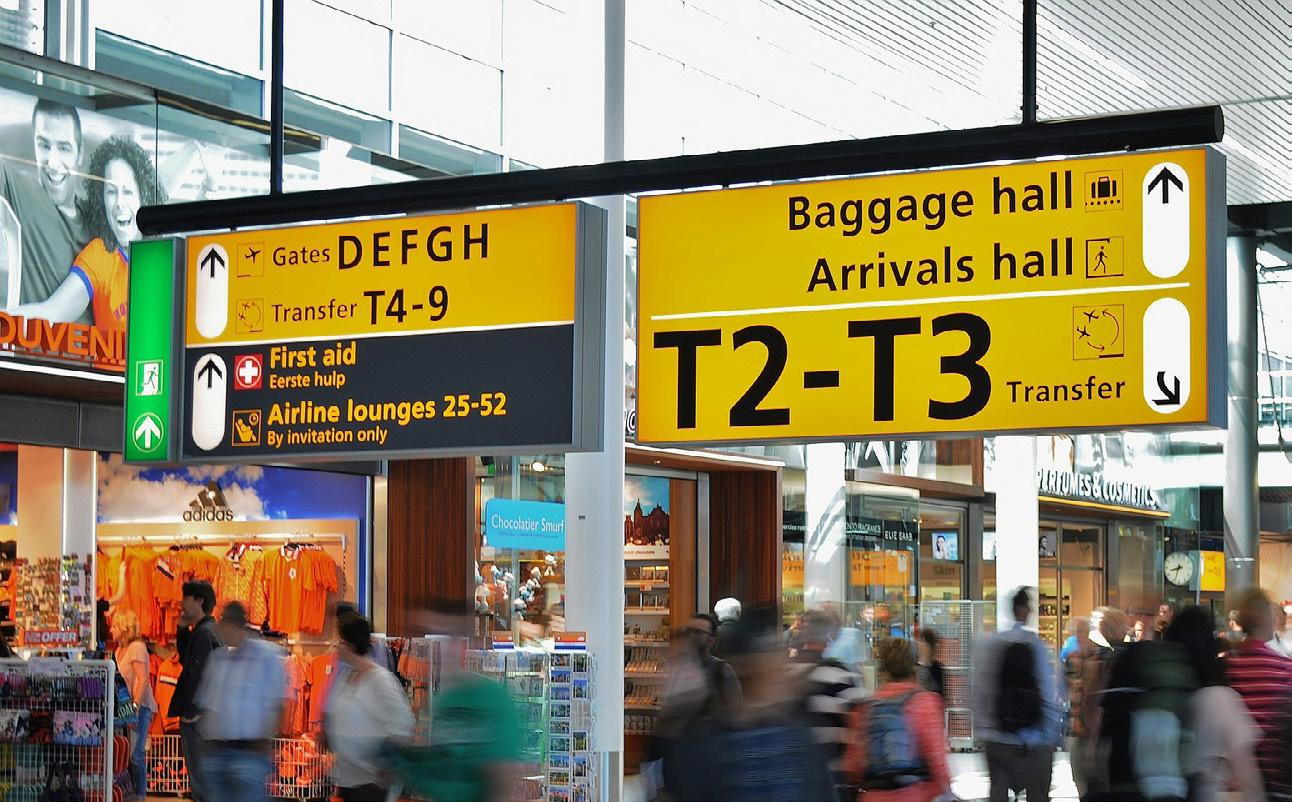
5 minute read
Sonic branding opportunities and the passenger journey
The passenger journey and sonic branding opportunities

Advertisement
As an airline, your brand has different visual touch points, from the app where they select their seat and check-in, to the airport counters to the lounge and finally to the aircraft itself.
But there are also aural touch points. As a result, we’ve looked at a typical passenger journey, to see where sound could play a part.
Making or querying a reservation on the phone
If you have ever taken part in an UberConference call, you’ll be familiar with the above song. It’s ‘I’m on hold’ by UberConference’s former creative director and co-founder, Alex Cornell.
It works for a number of reasons - when the song was originally created UberConference was still a new business. It needed something original that would set out its brand personality.
However the song is also quite simple, in that it involves an acoustic guitar and drums, and that’s it. As a result, it works when played over a phone line, with

minimal distortion.
Ideally of course your customers shouldn’t be holding at all, but if they are, it’s worth taking note of this USA Today study, which showed that over half of customers who had ‘dead air’ were likely to drop off after a minute with a quarter thinking they had waited for five minutes.
By contrast, most respondents who had a message and music thought they’d been on the phone for less than a minute with few dropping off.
On your app and online
When they open up your app, do they hear anything? How about on your website, what sonic or audio opportunities are there for customers to interact with?

How Air France does it
Air France is an example of an airline which uses music as both a promotional and a brand building tool.
The airline has a dedicated ‘Air France Music’ Facebook page, which has over 150,000 fans. Through the Air France Play app, as well as the Air France music microsite you can download and play audio.
That of course gives you a taste of what’s on offer on the IFE system. As the selection is curated, you also of course start to form an impression of the Air France brand through the songs they’ve chosen to make available to you.
In fact, Air France goes beyond music, there are meditation tracks for both adults and kids available via the app. The airline has also run a number of music based campaigns and experiments over the years.
For example in 2012, Air France released an app that you pointed at the sky to download songs from passing aircraft.
In your lounges
When your premium class passengers or frequent fliers come into your lounge, what do they hear?
Right now, in many cases the answer is the rolling TV news on the screen and the background conversations / phone calls of other passengers.
While you of course need to allow for the fact that there’s a demand for dedicated quiet and work zones in lounges, this is an opportunity.
You could have a music selection in your lounge that helps get passengers in a certain frame of mind, and conveys something about your brand.
In retail outlets / restaurants (for airports)
Many retailers already understand why they should play music and have the right kind of sound in their outlets.

For example, depending on what you play, it can either speed up or slow the pace by which people move through the store.
Think of duty free outlets placed right after security, or the ‘river of shops’ layout you have at many airports, where passengers have to navigate past every shop and restaurant before reaching the gate.
48. Many passengers look to move through as quickly as possible, when really as retailers and as an airport you want them to linger. And there’s evidence that music and sound is one way of getting them to do that.
Interestingly, sales of certain impulse purchases - things you don’t strictly need for your meal - like shakes and smoothies, grew by even more.
At the gate
Perhaps you’re an airline with your dedicated terminal, like Jazeera in Kuwait (T5), Emirates in Dubai (T3) and Lufthansa in Munich (T2).
While it might not be desirable or practical to have sound / music echoing through large terminal departure halls, there are places you could consider having it.
49. For example - at gates, where passengers wait to board. Think of the boarding experience, especially for economy passengers. A lot of people are packed into one room, and they often stand up and start queuing long before boarding starts.
They don’t want to be there, they want to be on board, and when you are just sitting or standing and waiting, 10, 15 or 30 mins can seem a lot longer than that.
Here the right use of sound could play a part. You might want to relax waiting passengers, you might want to get them in the mood for their holiday depending on the flight and destination, you might want to give them a taste of what’s playing on board.
Of course, what you play them needs to be thought through and needs to be consistent with other parts of your sonic brand, which is where the sonic branding experts at DLMDD can advise.
On board - important given the rise of the silent traveller
In the next article we talk specifically about airline boarding music, where DLMDD founder Max De Lucia reviews a number of airline boarding tracks.
There are a number of reasons why the boarding song or soundtrack is important, not least that it’s a vital piece of sonic branding that says something about you.
You could argue it’s even more important given the rise of the so-called silent travellers - passengers who have minimal to no interaction with your staff until they are on your aircraft.
Silent travellers choose their seats, check-in, order extras such as added luggage allowance via your app. And when they
get to the airport, they go through straight through security or use bag drops which are increasingly automated.
Silent travellers may not interact with your employees until the point when they board your aircraft, which is why making the right impression, both in terms of your visual and sonic brand, counts.
On arriving
Finally, there’s the point to where you get your passengers to their destination.
Someone on a two hour London Gatwick - Barcelona flight will obviously be in a different frame of mind to someone who has flown overnight from Los Angeles to Paris.
That’s where carefully selecting and calibrating sound and music can come in. Right now most airlines don’t play anything, but some do.
For example, in the past KLM played ‘Save the last dance for me’ from Michael Buble on arrival on its wide body aircraft. Judging from some of the comments on frequent flier forums, not everyone was a fan.
Which comes back to the importance of choosing or even creating something that fits your brand and your passenger profile,
rather than selecting a tune that you think sounds nice or relaxing - not everyone likes Michael Buble.
And that again brings us back to the point of having sound experts advise on and develop every area of your sonic brand, which is where DLMDD can help.










